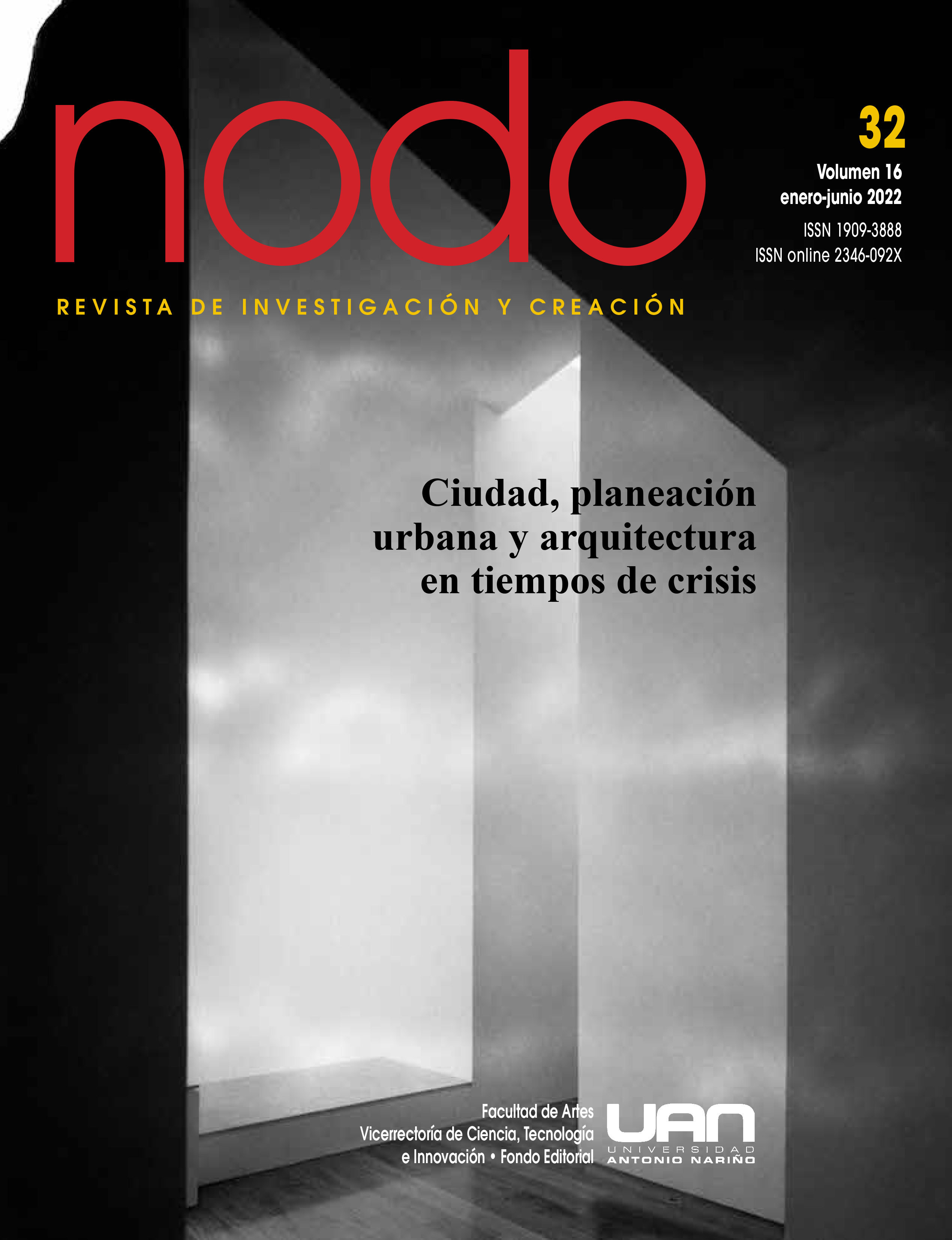Appreciation of public recreation space: a measure resource of the infrastructure in the city
DOI:
https://doi.org/10.54104/nodo.v16n32.1350Keywords:
city, public spaces, indicatorsAbstract
The design of urban projects has had an important boom not only due to the identification of the city from its forms, but also as the set of functional elements that integrate it and make up its essence. The purpose of this work is to expose macro indicators for the appreciation of public recreational spaces, as well as connectivity conditions of them. There are presented inclusion and belonging categories to measure those attributes in the user population, from which ten quantitative macro indicators emerge, which in turn give rise to 180 sub indicators, in addition to the model for a global indicator. The contributions of this study are reflected in the differentiation that these categories have with respect to studies of an urban design nature to intervene in the management and planning of policies that respond to the guidelines of the right to the city.
Downloads
References
Borja, J. & Muxi, Z. (2003). El espacio público, ciudad y ciudadanía. España: Electa.
FAO (Naciones Unidas para la Alimentación y la Agricultura) (enero, 2021). Beneficios de los árboles urbanos. Recuperado de http://www.fao.org/resources/infographics/infographics-details/es/c/411598/
Fernández, J. B, García Milá, J; Juncà Ubierna, J.A.; De Rojas Torralba, C. y Santos Guerras, J. J. (2002). Manual para un entorno accesible. Documentos, núm. 15. España: Ministerio de Trabajo y Asuntos Sociales; Real Patronato sobre Discapacidad, con la colaboración de la Fundación ACS. Recuperado de https://sid.usal.es/idocs/F8/FDO17241/manualparaunentornoaccesible.pdf
GEM-Gobierno del Estado de México (2018). Plan Municipal de Desarrollo Urbano de Toluca. Recuperado de http://seduv.edomexico.gob.mx/planes_municipales/toluca/pmdutol.pdf
Gomes, Christianne L. (2014). El ocio y la recreación en las sociedades latinoamericanas actuales. Polis. Revista Latinoamericana, 13(37), 363-384. Recuperado de https://www.redalyc.org/articulo.oa?id=30531107020.
Higueras, E. (2009). El reto de la ciudad habitable y sostenible (capítulo 2). España: DAPP Publicaciones Jurídicas. Recuperado de https://oa.upm.es/16625/1/Ecosistema.pdf
ICOM-Consejo Internacional de Museos. (2020). Los museos no tienen fronteras, tienen una red. Recuperado de https://icom.museum/es/news/el-icom-anuncia-la-definicion-alternativa-del-museo-que-se-sometera-a-votacion/
Molina-Prieto, L. F. (2016). Resiliencia a inundaciones: nuevo paradigma para el diseño urbano. Revista de Arquitectura (Bogotá), 18(2), 82-94. Recuperado de https://www.redalyc.org/articulo.oa?id=125148006008
ONU-CEPAL/Naciones Unidas y Comisión Económica para América Latina y el Caribe (2018), Plan de acción regional para la implementación de la nueva agenda urbana de América Latina y el Caribe, 2016-2036. Naciones Unidas: Santiago.
Otone, E., Sojo, A. et al. (2007). Cohesión social. Inclusión y sentido de pertenencia en América Latina y el Caribe. Naciones Unidas-Cepal; Agencia Española de Cooperación Internacional; Secretaría general Iberoamericana.
UNPD, s/a. Infraestructura. Documento de apoyo. International Recovery Platform. Recuperado de https://eird.org/pr14/cd/documentos/espanol/Publicacionesrelevantes/Recuperacion/6-Infraestructura.pdf
Downloads
Published
-
Abstract535
-
PDF (Español)464
How to Cite
Issue
Section
License
Copyright (c) 2022 Universidad Antonio Nariño

This work is licensed under a Creative Commons Attribution-NoDerivatives 4.0 International License.




 Portal de Ciencia Abierta
Portal de Ciencia Abierta